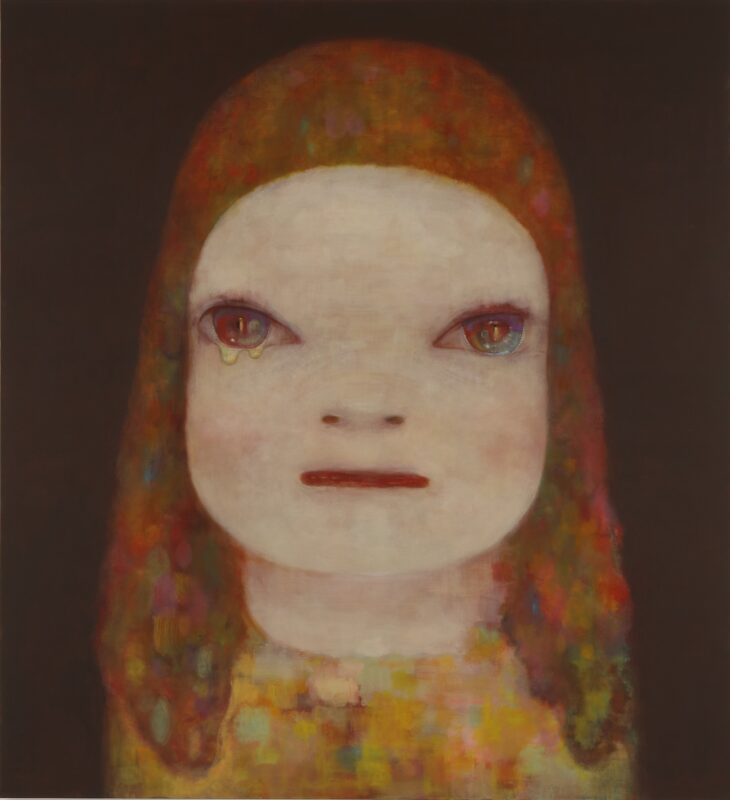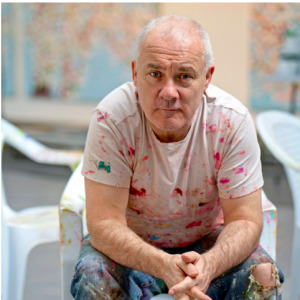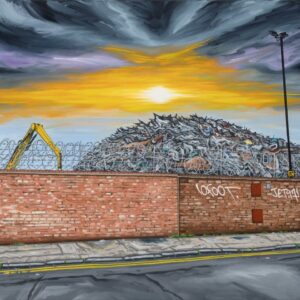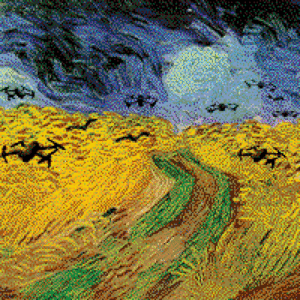The Guggenheim Museum Bilbao presents Yoshitomo Nara. This retrospective exhibition reveals and explores the intriguing world of Yoshitomo Nara. It takes us on a journey through his evolving creativity from the origins of his ideas. Organized by theme, rather than chronologically or according to technique and materials, the exhibition offers an insight into Nara’s conceptual and formal processes.

The broad selection of paintings, drawings, sculptures, and installations made over the course of the last four decades—1984 to 2024—reflects his empathetic response to the people and places he has encountered over the years.
This is the first solo major exhibition of Nara’s work to be held in Spain and in a prominent European museum. The presentation was uniquely devised for the gallery space at Guggenheim Museum Bilbao. The exhibition will tour to Baden-Baden and London, where the display will be reconfigured in relation to each venue.
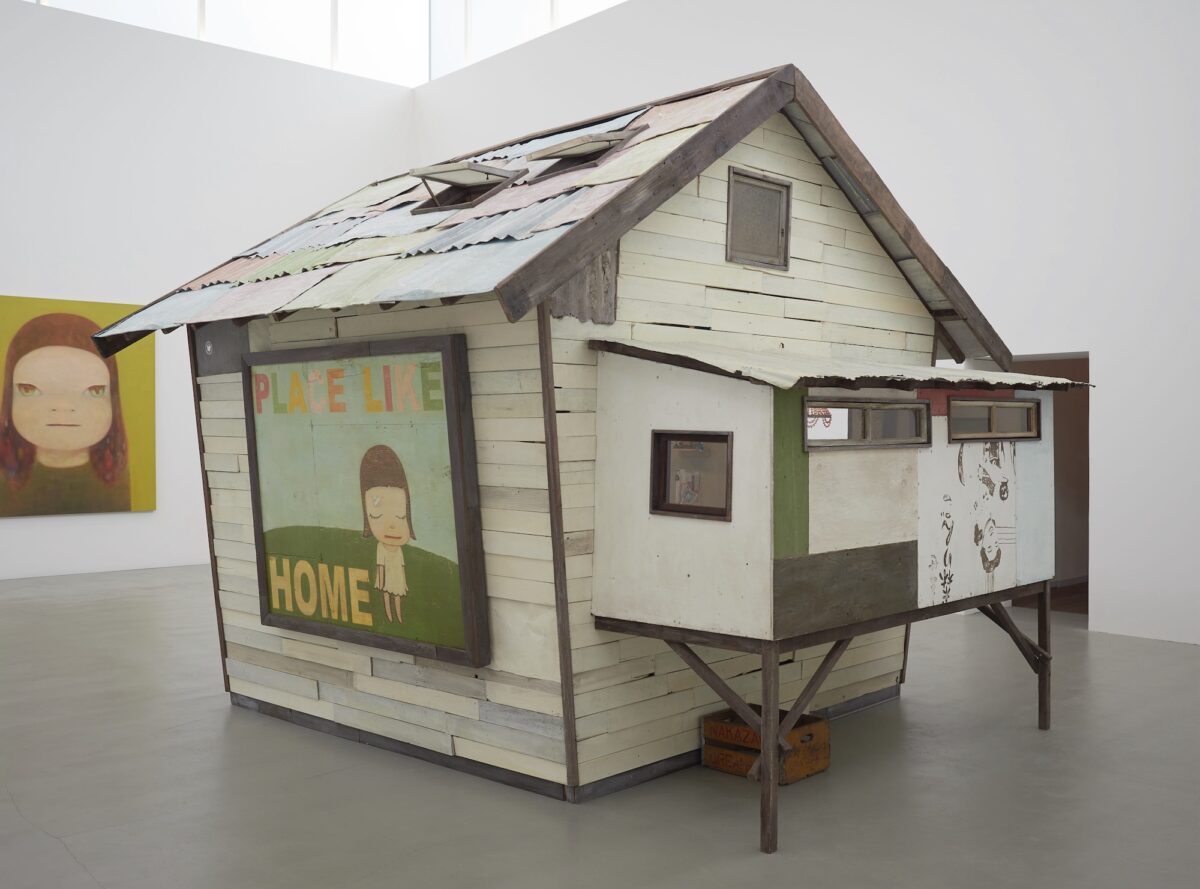
Yoshitomo Nara (b. 1959, Hirosaki, Aomori Prefecture, Japan) is one of the most celebrated artists of his generation. His impressive images of children with large heads and big eyes—at times menacing, challenging, and defiant, but also melancholic and uncertain—are widely recognized.
Nara’s characters, his figures and animals, are a reflection of himself. They are a visual representation and means of expression for his innermost thoughts and emotions. Childhood memories, his life experiences, his knowledge of music, art, and society, in Japan and abroad, are the sources of his creativity. Nara has a profound interest in humanity and his work examines and incorporates ideas surrounding concepts of home, community, nature, and their interconnectedness.
This survey exhibition is arranged thematically, according to Nara’s specifications. The motifs which recur in his work—including the red-roofed house, the sprouts, the puddle, the box, the blue boat, and the forest—reveal the continuity of thought he has maintained throughout his career, and they serve to highlight his stylistic development. Nara views himself as a painter, first and foremost, but he explores each theme within a range of other materials and formats—drawing, sculpture, and installation.
Nara’s childhood memories—marked by a feeling of isolation—his travels abroad, time in Germany, and his knowledge of art history, are key to an understanding of his work. It is also deeply rooted in the music he listened to as a child: folk songs by American singer-songwriters like Bob Dylan, with their dissenting, antiwar message during the Vietnam war and support for the civil rights movement; the introspective, melancholic sounds of the blues; and grassroots folk music coming out of England and Ireland. With no understanding of the foreign-language lyrics, Nara absorbed the sounds on a sensory level. Combined with what he intuited from the album cover images, he understood the music on his own terms and invested it with personal emotion. This was long before the era of punk or new wave, from which Nara would later draw inspiration. Through music, Nara connected with a respect for humanity, community, and a sense of freedom.
In February 1980, as a twenty-year-old student, Nara travelled to Europe for the first time. This visit allowed him to view, firsthand, early medieval and Renaissance paintings, with their biblical themes and religious narratives, and the work of European modern masters. They had an immense emotional pull for Nara and he experienced an enlightened awakening through these encounters. He gained a wealth of knowledge from the Impressionists and Expressionists and from artists associated with the School of Paris. He drew from their philosophies, spirituality, and techniques to reconsider everything he had learned up to that point. In Nara’s own words,
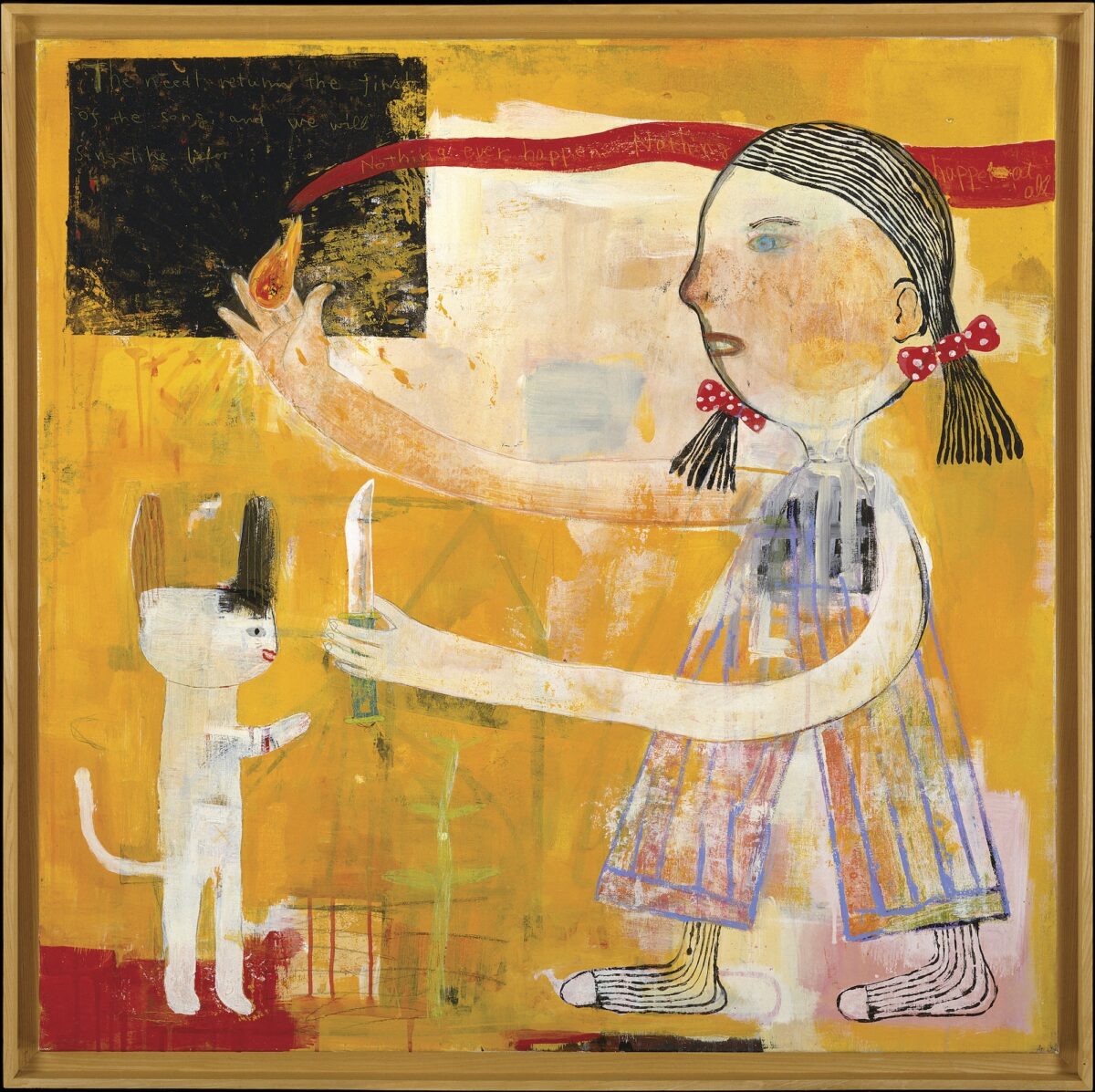
Collection Aomori Museum of Art © Yoshitomo Nara, courtesy Yoshitomo Nara Foundation
After leaving Japan, I realized that seeing things from Mount Fuji is completely different from seeing things from Mount Everest.
Nara made a second impactful trip to Europe in 1983, and several years later, following his graduation from Aichi Prefectural University of the Arts in 1987, he decided to move to Germany and study at the Kunstakademie Düsseldorf. This period became hugely significant for Nara’s personal and artistic development. His inability to speak German led to his conscious return to a state of solitude that had characterized his childhood and the realization that he needed to communicate through his art.
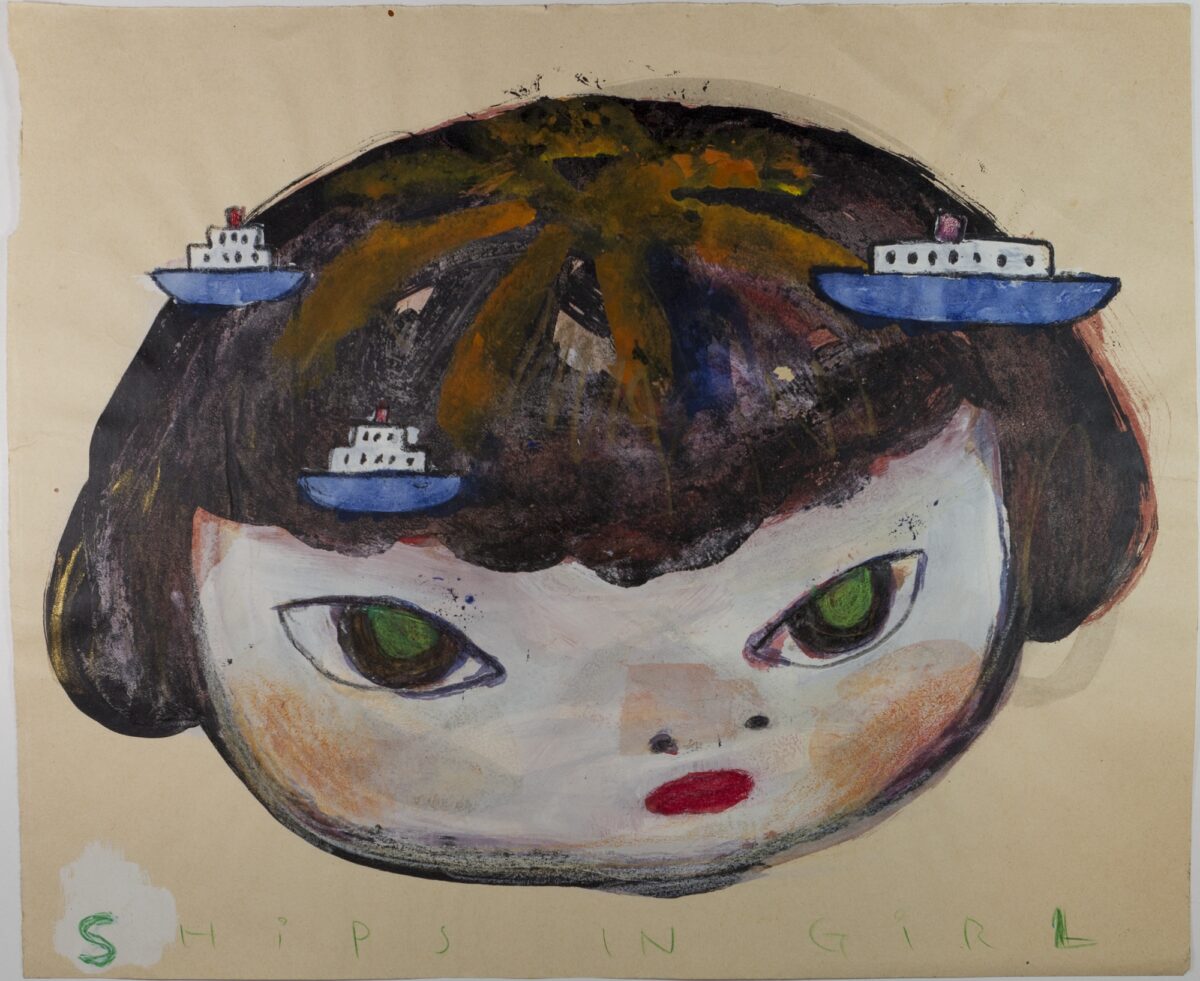
At the Kunstakademie, Nara studied under the artist A. R. Penck, who was a leading proponent of German Neo-Expressionism. Penck’s influence was already clear in Nara’s formal approach—figures depicted crudely using loose brushstrokes and strong, vibrant colors—and in his imagery, as seen in Make the Road, Follow the Road (1990), a painting which combines the mundane and the spiritual, establishing a personal mythology. Notably, Penck identified a dissonance between Nara’s painting and drawing from this period and advised Nara to integrate his two practices. This led to the refinement of his narrative compositions, giving rise to more streamlined, commanding, and emotionally direct works which became recognized in the European art world for their individuality and distinctiveness. Children with wide-set, often confronting eyes became characteristic.
After being awarded a master’s degree in painting from Kunstakademie Düsseldorf, Nara moved to Cologne, where he lived from 1994 until 2000. During his time in Cologne, Nara had a number of solo exhibitions and was included in group shows across Europe. Through the sale of his work, he was able to earn a living and devote himself wholly to his artistic production. New themes emerged, such as Mumps, which shows a child with a bandage wrapped under its chin and tied in a bow on top of its head, and Abandoned Puppy, a child dressed in a puppy costume. Both children are sometimes pictured inside a box, which for Nara is a signifier of shelter and protection.
In 1995 Nara had his first solo exhibition in the United States and he came to the attention of a wider audience. Critics highlighted the disturbing acerbity of his work. Three years later he was invited to be a guest lecturer in painting at the University of California. For three months he shared an apartment with fellow Japanese artist Takashi Murakami, which led to Nara’s participation in several exhibitions curated by Murakami in 2000. Nara’s work began to enter collections in North America: Sleepless Night (Sitting) (1997) was acquired by the Rubell Family Collection.
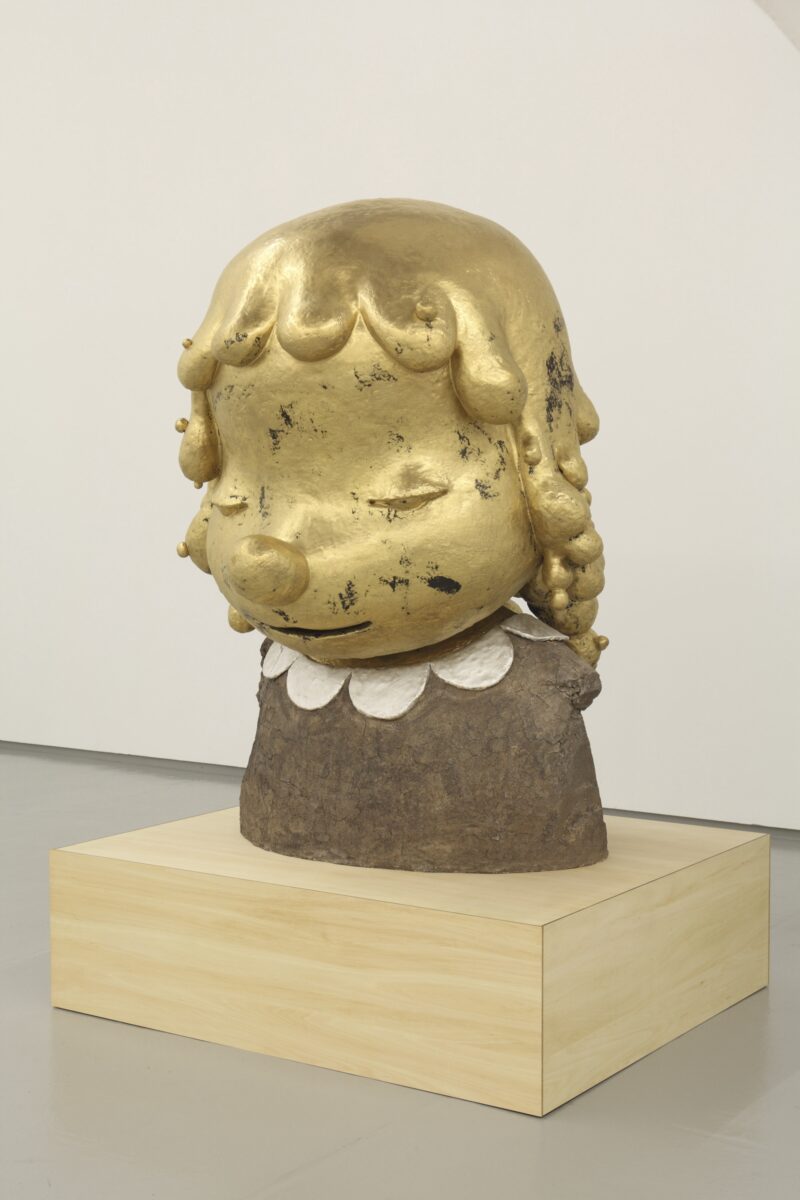
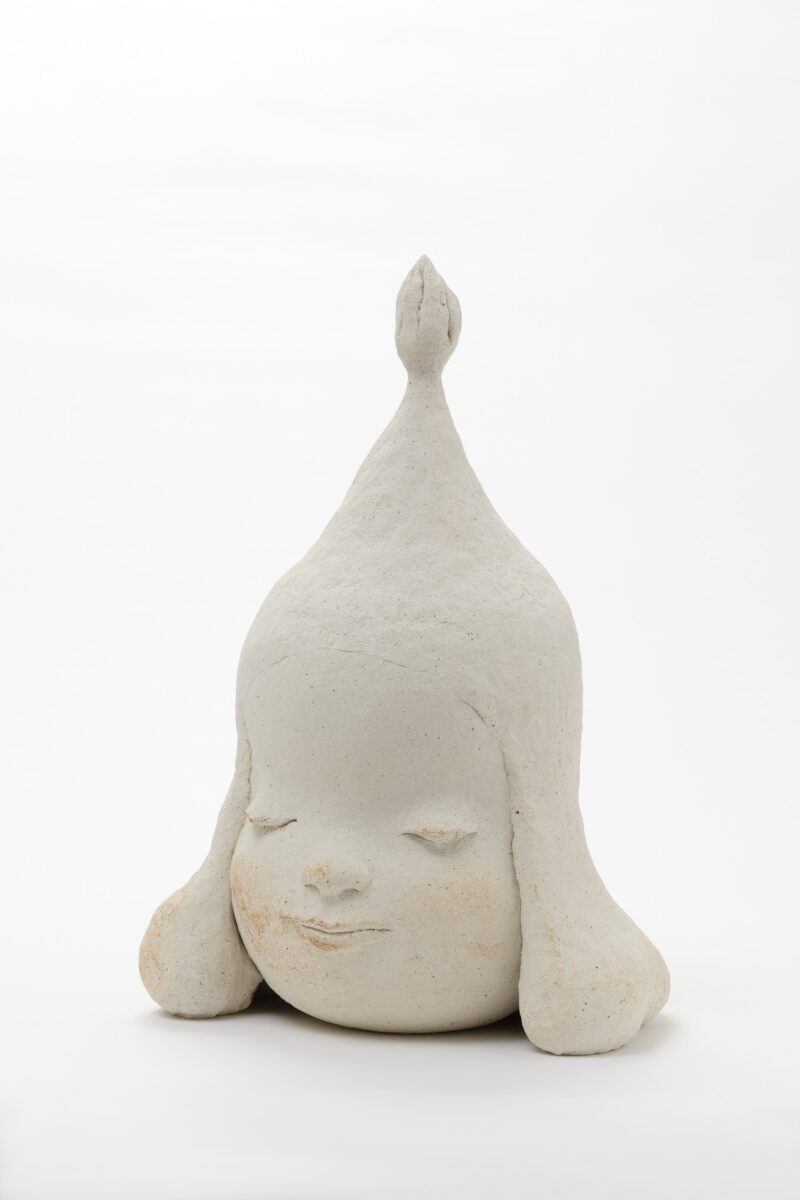
After living in Germany for twelve years, Nara made the decision to return to Japan in 2000. The following year his major solo exhibition I DON’T MIND, IF YOU FORGET ME. opened at Yokohama Art Museum. The exhibition traveled to five other venues across the country, including the Yoshii Brick Brew House in his hometown of Hirosaki, and Nara became one of the most prominent and widely-known artists in Japan. Works exhibited included his circular dish painting Too Young to Die (2001), which depicts an archetypal Nara character puffing on a cigarette, the composition echoing the shape of a Renaissance tondo.
On March 11th, 2011, Japan suffered the combined disasters of the Great East Japan earthquake, its resultant tsunami, and the nuclear accident at the Fukushima Daiichi power plant. The extent of the destruction caused by the power of nature had a life-changing impact on Nara. Faced with the enormity of the loss and the pain endured by those affected, he felt forced to reconsider his role as an artist and redirected his focus toward the Tohoku region, where he had grown up. Nara saw how rural areas fared
badly, economically and culturally, in relation to the overwhelming demands of big cities like Tokyo, and he initiated local, community-based art projects.
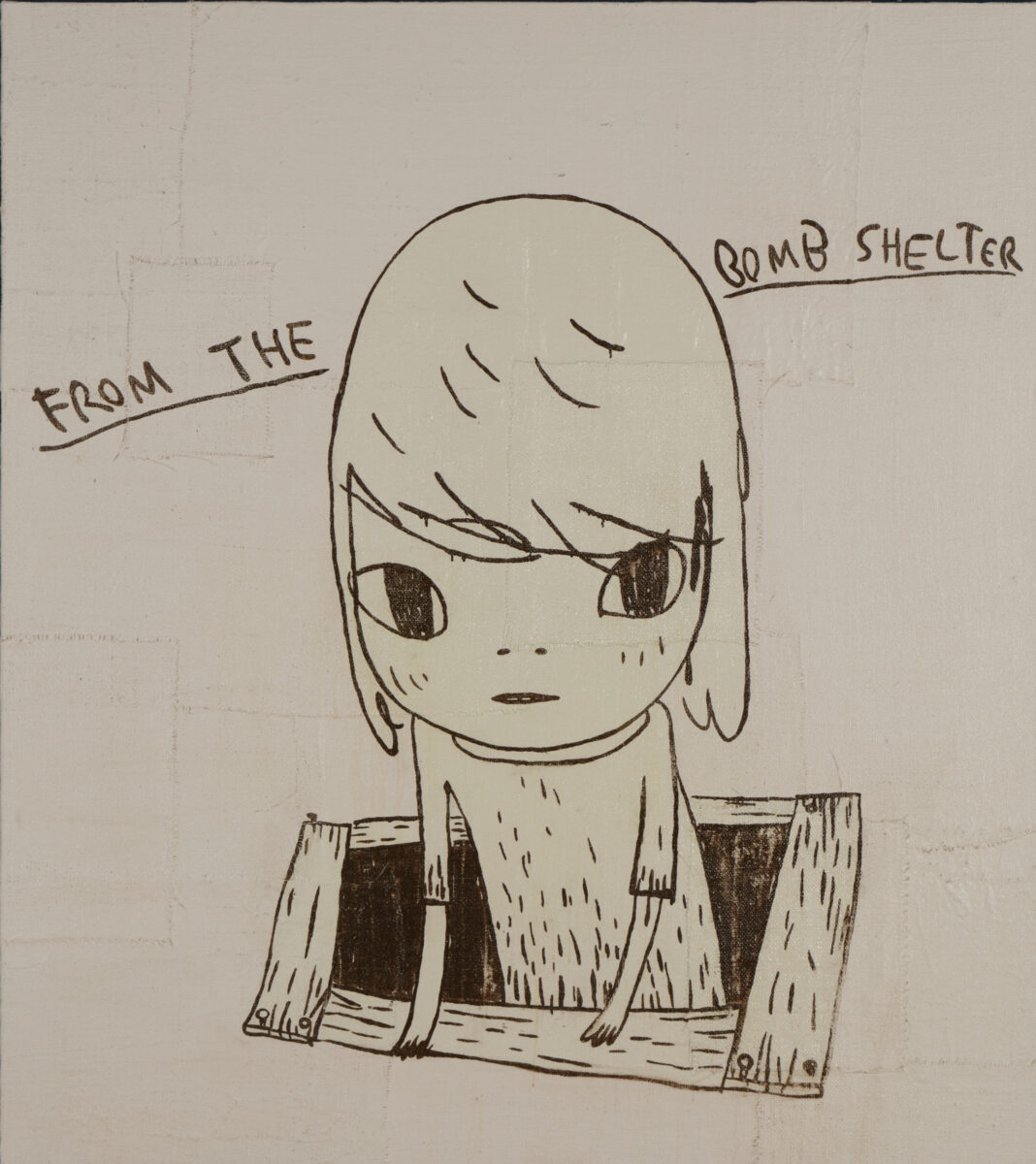
Collection of the Artist, © Yoshitomo Nara, courtesy Yoshitomo Nara Foundation
Nara’s pictorial language reflected his changed view of the world. From the Bomb Shelter (2017) shows a child tentatively emerging from an underground bunker. His monochrome image represents a continuation and development of two of his most enduring motifs: the box and the submerged figure, who accesses a portal, connected to a communal domain, through a puddle. From the Bomb Shelter was inspired by the 1953 film Hiroshima, directed by Hideo Sekigawa, based on the best-selling book Children of the A-Bomb (1951), a collection of firsthand accounts of school children who survived the Hiroshima bombing.
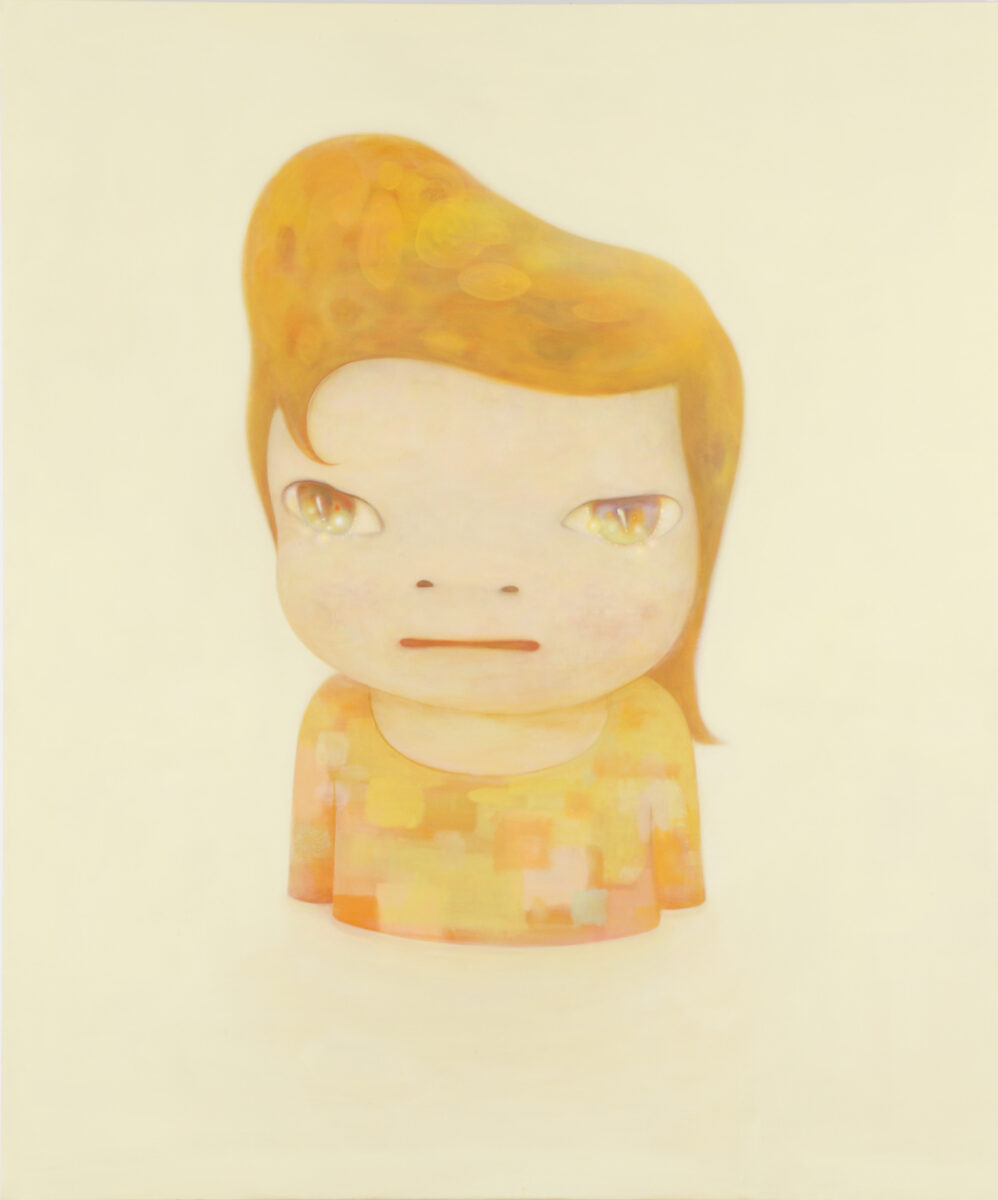
A similar sense of uncertainty emanates from his paintings Blankey (2012) and, more recently, Midnight Tears (2023). The children appear ethereal, painted with fragmented, multiple touches of different colors, a move from the solid areas of color seen in earlier works. Their horizontal, closed mouths give little away— the previously pouting or slightly upturned lips, verging on a smile, are gone—but deep emotion is communicated through their tear-filled eyes.
This exhibition spans the forty years since Nara’s second trip to Europe to the present day. It shows how Nara’s departure from Hirosaki and his time away from Japan were pivotal and necessary for him, providing him with the tools to rethink his role as an artist and reevaluate his relationship with communities in Japan, his interactions with the people and with nature:
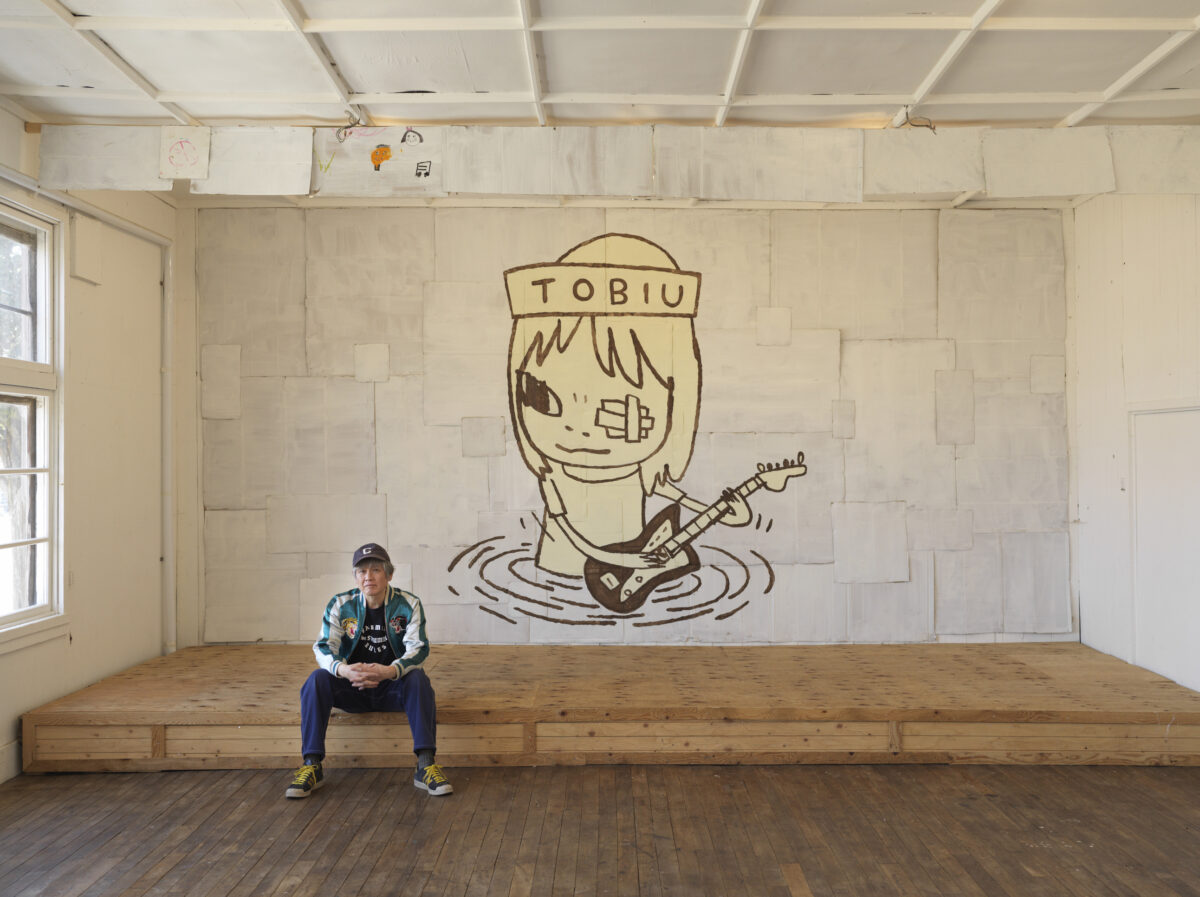
I finally felt like I now possessed the things I had been missing, like anything else I might need was right at hand, and I was capable of living in a provincial area. But I think this is something I had to leave my hometown for a while in order to understand.
Yoshitomo Nara, June 28th – November 3rd, 2024, Guggenheim Museum Bilbao
Curator: Lucía Agirre
Organized by the Guggenheim Museum Bilbao in collaboration with the Museum Frieder Burda, Baden-Baden, and the Hayward Gallery, London CATALOGUE This exhibition is accompanied by a fully illustrated catalogue with texts by Lucía Agirre, exhibition curator, Mika Yoshitake, and Shigemi Takahashi, which examine Yoshitomo Nara’s oeuvre and reveal the relationships, harmonies, and dissonances in his paintings, drawings, sculptures, and installations.

